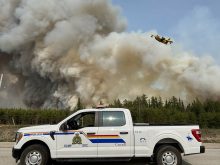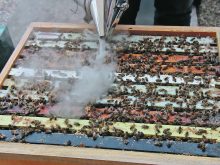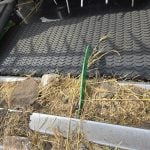Focus on domestic stock replacement and more time to pay closer attention to hive health seen as reasons for success
WINNIPEG — Honeybee colony losses in Canada are estimated at 36 per cent in 2024.
That’s marginally worse than 2023, when beekeepers lost 32 per cent of their colonies through the winter, says the Canadian Association of Professional Apiculturists (CAPA).
Every July, CAPA publishes data on the number of hives that fail to survive the winter. The figures are based on a survey of beekeepers in each province.
Read Also

China’s grain imports have slumped big-time
China purchased just over 20 million tonnes of wheat, corn, barley and sorghum last year, that is well below the 60 million tonnes purchased in 2021-22.
Hives fail to survive the winter for a variety of reasons, including disease, parasites such as varroa mites, lack of food and cold weather in the spring.
The 36 per cent figure is not great because it means beekeepers replaced more than one-third of the colonies that went into storage last fall.

In the winter of 2023-24, Saskatchewan beekeepers lost only 18 per cent of their hives.
In comparison:
Manitoba beekeepers suffered colony losses of 39 per cent.
Alberta beekeepers lost 34 per cent of their hives.
The data from previous years tells a similar story. Beekeepers in Saskatchewan are doing something right.
“We’re consistently first or second (for lowest winter mortality),” said Geoff Wilson, the provincial apiculturist for Saskatchewan.
“I think the last six years we’ve had the best winter results.”
There are several reasons for this, said Nathan Wendell, president of the Saskatchewan Beekeepers Development Commission.
One is that many beekeepers develop their own stock of bees to replace failing colonies. Those replacement hives are known as nucleus colonies.
“We have a strong focus on domestic stock replacement,” said Wendell, who lives near Inglis, Man., but belongs to the Saskatchewan commission.
“If there’s 100,000 colonies going into winter in Saskatchewan, there is (also) 30,000 to 35,000 nucleus colonies.”
Instead of importing queen bees and nucleus colonies from places such as New Zealand, Saskatchewan beekeepers breed their own.
“All research shows that domestic bees are suited for survival in this environment. They over-winter better,” Wendell said.
“Those bees are just better quality.”
Another factor could be hive management.
Saskatchewan beekeepers operate fewer hives than other regions, which means more time to look at individual colonies.
“We spend a lot of time assessing hives and intervening (in hive health). We do that throughout the season,” Wendell said.
The interventions could involve treating a hive for a particular disease or supplemental feeding with syrup.
Many beekeepers in the province are proactive, rather than reactive, Wilson said.
“(They) have been really attentive to the needs of the bees and giving them what they need.”
While Saskatchewan beekeepers have more success keeping hives alive over the winter, the total number of colonies in the province has contracted in recent years.
Saskatchewan had 115,000 honeybee colonies in 2019 and 99,000 in 2023.
Other provinces, such as Alberta and Manitoba, have maintained or increased their numbers.
As of the fall of 2023, Alberta had 308,000 bee colonies, Manitoba had 114,000 and Ontario 101,000.
















